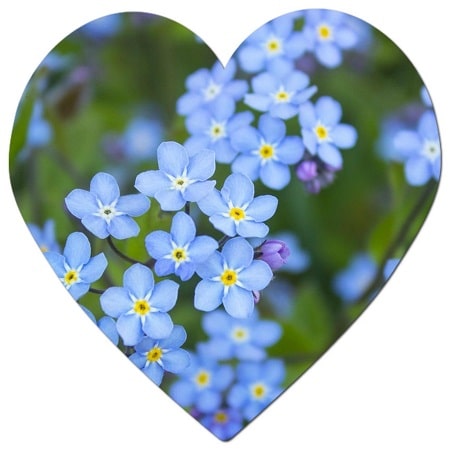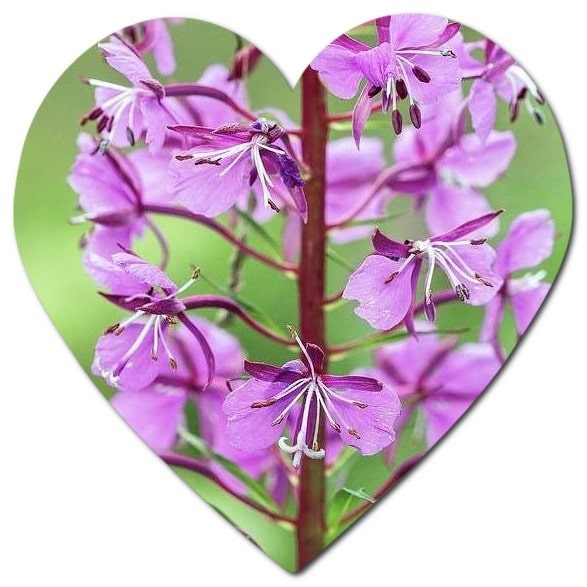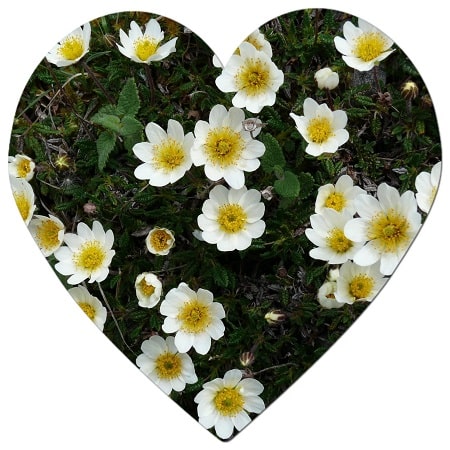Are there any special flowers for the Yukon? Yes, the Yukon has an official territorial flower known as the “Alpine Forget-Me-Not” (Myosotis asiatica). The Alpine Forget-Me-Not was designated as Yukon’s official floral emblem to represent the unique and rugged beauty of the region. This small and delicate wildflower is characterized by its striking blue blossoms and is well-suited to the alpine environments found in the Yukon, often thriving in rocky, high-altitude areas.
The choice of the Alpine Forget-Me-Not as the territorial flower reflects its significance in the natural landscape of the Yukon, and it serves as a symbol of the territory’s pristine wilderness and the enduring spirit of its people. The forget-me-not is a fitting representation of Yukon’s alpine and subarctic ecosystems, and it’s a source of pride for residents and visitors alike.

Yukon, in Canada’s far north, has a challenging climate with cold winters and a short growing season. However, there are still many beautiful and hardy flowers and plants that thrive in the region. Some of the best flowers and plants for Yukon’s unique environment include:
- Fireweed (Chamerion angustifolium): Fireweed is often considered the unofficial flower of Yukon due to its prevalence and vibrant pink-purple blossoms. It is one of the first wildflowers to appear in disturbed areas after wildfires.
- Arctic Lupine (Lupinus arcticus): Arctic lupine features spikes of blue or purple pea-like flowers and is well-suited to the harsh conditions of the northern climate.
- Mountain Aven (Dryas octopetala): This small, evergreen shrub produces lovely white or yellow flowers and is well-adapted to the subarctic and alpine environments of Yukon.
- Arctic Poppy (Papaver radicatum): The Arctic poppy is known for its striking yellow or orange flowers and can be found in rocky alpine regions.
- Dwarf Fireweed (Chamerion latifolium): Similar to fireweed, dwarf fireweed has bright pink to purple flowers and is often seen in subalpine and alpine areas.
- Lapland Rosebay (Rhododendron lapponicum): This small evergreen shrub has pink or purple bell-shaped flowers and is found in rocky, alpine areas.
- Labrador Tea (Rhododendron tomentosum): Labrador tea is a low-growing shrub with fragrant white flowers and is common in wet, boggy areas.
- Alpine Forget-Me-Not (Myosotis asiatica): This small, blue-flowered plant is well-suited to alpine environments and is the official territorial flower of Yukon.
- Moss Campion (Silene acaulis): Moss campion is a low, cushion-like plant with vibrant pink flowers that thrives in rocky alpine terrain.
- Yarrow (Achillea millefolium): Yarrow is a hardy perennial with white, pink, or yellow flowers and is often found in meadows and open areas.
- Bearberry (Arctostaphylos uva-ursi): Bearberry is a low, creeping evergreen shrub with pink or white bell-shaped flowers and red berries.
While Yukon’s growing season is short, the long summer daylight hours provide a burst of growth and blooming. Gardeners often focus on native and hardy plant species that can withstand the region’s challenging conditions, and wildflowers and alpine plants are particularly well-suited to the area. Additionally, gardening enthusiasts in Yukon may use cold frames and other techniques to extend the growing season and grow a wider variety of plants.
What flower is in the Yukon?
The official territorial flower of Yukon is the Alpine Forget-Me-Not (Myosotis asiatica). The Alpine Forget-Me-Not is a small, delicate wildflower with striking blue blossoms. This beautiful flower is well-suited to the alpine environments found in the Yukon, and it was designated as the territorial flower to represent the natural beauty and uniqueness of the region. It’s a symbol of Yukon’s rugged and pristine wilderness, and it can be found growing in rocky, high-altitude areas, often in meadows or alongside other alpine plants.
What are the perennial flowers in Yukon?
Perennial flowers are well-suited for the challenging climate of Yukon, where cold winters and a short growing season are common. Perennials come back year after year, which makes them a practical choice for gardening in this northern region. Here are some perennial flowers that can thrive in Yukon:

- Arctic Lupine (Lupinus arcticus): This native lupine produces spikes of blue or purple pea-like flowers and is well-adapted to Yukon’s conditions.
- Fireweed (Chamerion angustifolium): Fireweed is a classic wildflower in Yukon, known for its tall stalks of pink-purple flowers. It’s a hardy perennial and often one of the first plants to appear after wildfires.
- Mountain Aven (Dryas octopetala): Mountain aven is a low, evergreen shrub with white or yellow flowers, making it suitable for Yukon’s subarctic and alpine environments.
- Arctic Poppy (Papaver radicatum): The Arctic poppy produces striking yellow or orange flowers and is well-suited to rocky alpine regions.
- Dwarf Fireweed (Chamerion latifolium): Similar to its taller cousin, dwarf fireweed boasts pink to purple flowers and thrives in subalpine and alpine areas.
- Lapland Rosebay (Rhododendron lapponicum): Lapland rosebay is an evergreen shrub with pink or purple bell-shaped flowers that are often found in rocky, alpine terrain.
- Moss Campion (Silene acaulis): Moss campion is a cushion-like plant with bright pink flowers, commonly found in rocky, alpine environments.
- Labrador Tea (Rhododendron tomentosum): Labrador tea is a low-growing evergreen shrub with fragrant white flowers, frequently seen in wet, boggy areas.
- Bearberry (Arctostaphylos uva-ursi): Bearberry is a creeping evergreen shrub with pink or white bell-shaped flowers and red berries.

These perennial flowers are adapted to Yukon’s specific climate and can thrive despite the region’s short growing season and harsh winters. Gardeners in Yukon often prioritize native and hardy plant species, and these perennials are known for their ability to withstand the challenges of the northern climate.
